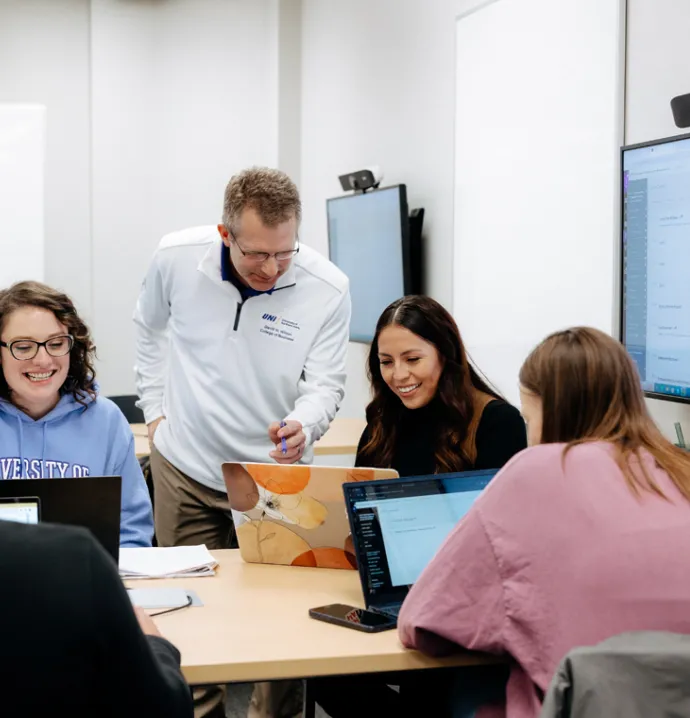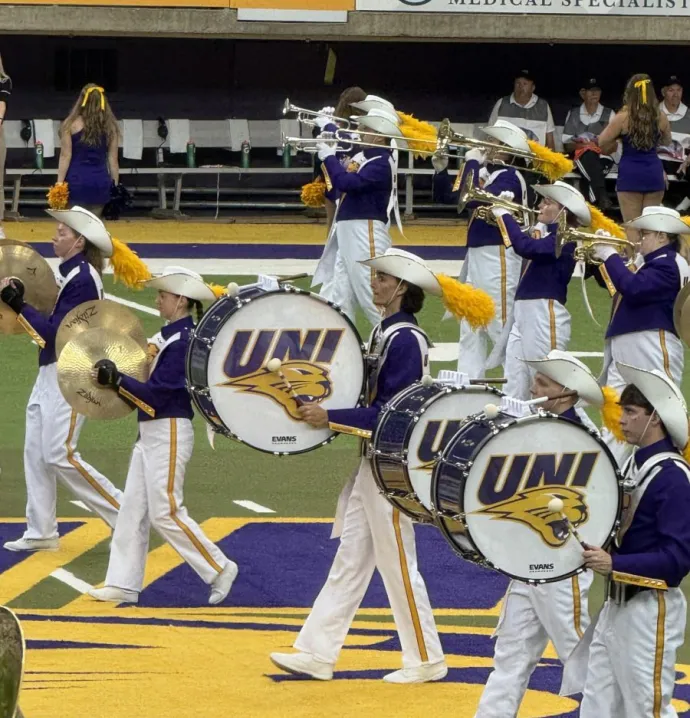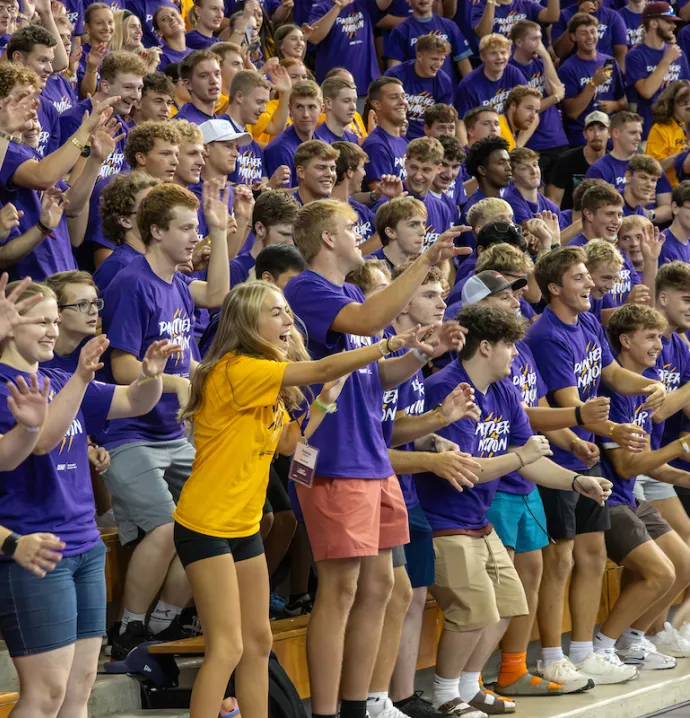Students help after Cedar Rapids devastated by storm
Students help after Cedar Rapids devastated by storm
With just under a week to go until the fall semester was set to begin, UNI senior and Marion native Blake Allington was focused on settling into his new home in Cedar Falls. When a late morning thunderstorm hit Cedar Falls with torrential rain, he didn’t think much of it other than hoping he’d stay dry. Everything changed when storm reports started coming out of the greater Cedar Rapids area.
Allington, a strategic public relations major who also works for the city of Marion Parks and Recreation Department, immediately jumped in his car to go lend a hand. Hurricane-force winds had blasted through the area, uprooting trees, destroying homes and damaging property. Winds peaked at more than 100 mph, according to the National Weather Service.
“I arrived in Marion and Cedar Rapids less than an hour after the storm to find absolute chaos. Houses were crushed by trees, power lines were down, and there were a lot of scared and confused people.” Allington said. “My parents’ house had minor damage, with a broken window and two downed trees, but the rest of the city was a lot worse.”
Over the past week, UNI students - including 50 members of the men’s and women’s rugby club teams - have gone out of their way to help clear debris, clean up neighborhoods and help residents as the Cedar Rapids region works to recover from the devastating straight-line storm.
Allington worked from Tuesday through Friday, clearing trees and debris to help get roads reopened and power restored. Everywhere Allington went, he was met with grateful community members pitching in to help. While the physical damage is great, the traditional Iowan spirit of hope remains unbroken, he said.
“I saw neighbors that had never met before working side by side to help each other. The work is far from done, but the people of Marion, Cedar Rapids and surrounding communities will come together (6 feet apart where possible) and help restore our cities.” Allington said. “The damage was immense, but we’re going to come back stronger.”
Rebuilding after a natural disaster is unfortunately something residents of the greater Cedar Rapids area are familiar with. Almost 12 years ago, in the spring of 2008, they dealt with record flooding that had some parts of the city submerged for weeks. Senior instrumental music education major Andrew Piper has witnessed the aftermath of both.
“This is by far the worst condition I have ever seen the Cedar Rapids metro area, worse than the 2008 flood by at least ten times.” said Piper. “You always see places around the world with this amount of damage from natural disasters on TV, but I never thought that would be my hometown.”
Piper arrived back in his hometown of Marion five days after the storm had hit to find absolute devastation. Neighbors and friends had their vehicles crushed by huge trees. Garage doors were crumpled inwards, and huge sections of walls and roofs were missing from houses. Nearly every power line was snapped or down. He immediately went to work helping others.
“The craziest thing I saw during clean up was a 2x4 wood beam from one house that was shot through the wall of another house. There were about 3 feet of the board on each side of the wall,” Piper said. “Thankfully nobody was hurt.”
“When your neighbors are in trouble you help,” said UNI women’s rugby coach Meghan Flanigan ‘13, who went to Cedar Rapids and Toledo along with most of the 20 team members to help with cleanup efforts and donate much-needed supplies. “This group of young women really stepped up.”
Prior to last Monday, many Midwesterners were unfamiliar with the term “derecho,” and for good reason: there’s typically only one to three each year in the region, according to the National Oceanic and Atmospheric Administration. NOAA officially defines a derecho as “a widespread, long-lived windstorm that is associated with a band of rapidly moving showers or thunderstorms.” To be classified as a derecho, winds must be continuously blowing at 58 mph. It’s rare to see a perfect combination of elements like heat and humidity that produces a devastating derecho, but that’s exactly what happened last week.
Senior environmental science major Chase Boddicker was working as an Facebook administrator for UNI’s Green Iowa AmeriCorp program as part of his volunteer work this summer when he got an urgent message last week from Katie Benedix, development manager for the historic Brucemore Estate in Cedar Rapids. Benedix was messaging groups across the state desperately seeking help to clear debris from the estate, which had lost about 70% of its trees.
Boddicker was down there the next day, and he’s been back four times since. The last two times, he brought all 30 members of UNI’s rugby team with him to help clear neighborhoods overwhelmed with debris and devastation.
“It’s surreal. I’ve never seen anything like this in Iowa, and I’ve lived here my whole life,” Boddicker said. “Some people I talked to said they just spent 45 minutes in their basement feeling the foundations of their house shake around them.”
Boddicker’s teammate, Ben Boezinger, a sophomore athletic training major, said he’ll never forget driving through downtown Cedar Rapids and seeing the devastation for the first time.
“Trees were completely uprooted, and houses were cut in half like cake,” Boezinger said. “People described it like a bomb went off in their area.”
The rugby team has helped clear trees and branches for city streets choked with them. Many roads remain closed and power was only recently restored after more than a week. But the sense of community is palpable in the number of hands that have emerged to begin the recovery process, Boddicker said.
“When it really comes down to it, it’s about Iowans helping Iowans,” Boddicker said. “What happens in Cedar Rapids matters to Cedar Falls. If one of us falls, then we all start to fall.”




